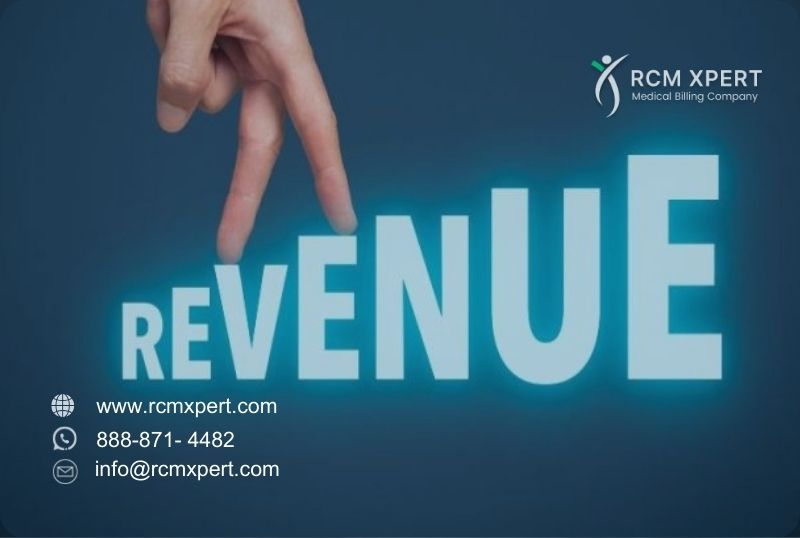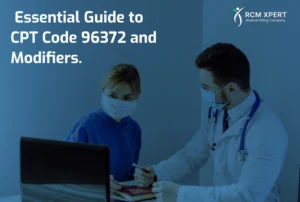Ever wondered how healthcare providers keep their financial wheels turning smoothly? Enter Revenue Cycle Management (RCM) – the unsung hero of the healthcare industry. In this guide, we’ll walk you through the 15 essential steps of RCM that keep healthcare organizations financially healthy and operationally efficient.
What is Revenue Cycle Management?
Before we dive into the nitty-gritty, let’s get our bearings. Revenue Cycle Management is the financial process healthcare providers use to track patient care episodes from registration and appointment scheduling to the final payment of a balance. It’s like the circulatory system of a healthcare organization’s finances – keeping everything flowing smoothly.
Why is RCM important?
Think of RCM as the financial backbone of healthcare. It ensures that providers get paid for their services, which in turn allows them to continue providing quality care. Without effective RCM, healthcare organizations could face financial instability, reduced quality of care, and even closure. Yikes!
The 15 Steps of Revenue Cycle Management
Now, let’s roll up our sleeves and explore the 15 steps that make up a robust RCM process. Buckle up – it’s going to be an informative ride!
1. Pre-registration
The journey begins before the patient even steps foot in the facility. Pre-registration is all about gathering essential information upfront. It’s like packing your bags before a trip – you want to make sure you have everything you need.
During this step, staff collect:
- Patient demographics
- Insurance information
- Medical history
Pro tip: Implementing online pre-registration can save time and reduce errors. It’s a win-win for both patients and providers!
2. Registration and scheduling
Next up is the official registration and scheduling process. This is where the rubber meets the road. Staff verify the information collected during pre-registration and schedule the patient’s appointment.
Key activities include:
- Confirming patient information
- Scheduling the appointment
- Assigning a medical record number
Remember, accuracy at this stage can prevent headaches down the line. It’s like double-checking your map before starting a road trip.
3. Insurance eligibility verification
Here’s where things get a bit technical, but stick with me. Insurance eligibility verification is crucial for avoiding claim denials later on. It’s like checking if you have enough gas before a long drive.
Staff should:
- Verify the patient’s insurance coverage
- Confirm policy details and benefits
- Identify any pre-authorization requirements
Pro tip: Many RCM software solutions offer automated eligibility verification. It’s a real time-saver!
4. Point of service collections
Now we’re talking money. Point of service collections involves collecting any upfront payments from patients. This could include copays, deductibles, or payments for non-covered services.
Why is this important? It’s much easier to collect payment at the time of service than to chase it down later. Think of it as paying for your meal before you leave the restaurant.
5. Charge capture
Charge capture is all about documenting the services provided. It’s like keeping a detailed log of your workday. Every service, procedure, and supply used must be accurately recorded.
Key points:
- Use proper coding (more on this later)
- Ensure all services are captured
- Link charges to the correct patient account
Accurate charge capture is essential for proper billing and reimbursement. No one wants to leave money on the table!
6. Coding
Ah, coding – the language of healthcare billing. This step involves translating the documented services into standardized codes that insurance companies understand. It’s like converting your vacation stories into a universal language that everyone can comprehend.
Types of codes used:
- ICD-10 (International Classification of Diseases, 10th revision)
- CPT (Current Procedural Terminology)
- HCPCS (Healthcare Common Procedure Coding System)
Accurate coding is crucial for proper reimbursement and compliance. It’s a skill that requires ongoing education and attention to detail.
7. Charge entry
Once the services are coded, it’s time for charge entry. This involves inputting the coded charges into the billing system. Think of it as entering expenses into your budget spreadsheet.
Key considerations:
- Ensure all charges are entered accurately
- Link charges to the correct patient account
- Apply any relevant modifiers
Accuracy at this stage can prevent claim denials and delays in payment.
8. Claims submission
Now we’re sending our work out into the world. Claims submission involves transmitting the coded and charged services to insurance payers for reimbursement. It’s like mailing your tax return – you want to make sure everything is in order before you hit send.
Best practices:
- Submit claims electronically when possible
- Ensure all required fields are completed
- Include any necessary supporting documentation
The goal is clean claims that sail through the payer’s system without a hitch.
9. Claims tracking
Once the claims are out the door, we don’t just sit back and wait. Claims tracking involves monitoring the status of submitted claims. It’s like tracking a package you’ve sent – you want to know where it is in the process.
Key activities:
- Monitor claim status
- Identify any pending or rejected claims
- Follow up on delayed claims
Proactive claims tracking can help identify and resolve issues quickly, improving cash flow.
10. Payment posting
Cha-ching! Payment posting is the process of applying received payments to the appropriate patient accounts. It’s like balancing your checkbook – you need to make sure everything adds up.
Steps involved:
- Receive and record payments from payers and patients
- Apply payments to the correct patient accounts
- Identify any discrepancies between billed amounts and payments received
Accurate payment posting is crucial for maintaining clean accounts receivable.
11. Insurance follow-up
Not all claims are paid in full on the first submission. Insurance follow-up involves investigating and resolving any unpaid or partially paid claims. It’s like being a detective – you’re searching for clues to solve the mystery of the unpaid claim.
Key activities:
- Identify unpaid or partially paid claims
- Contact payers to determine reasons for non-payment
- Submit additional information or corrected claims as needed
Persistent and timely follow-up can significantly improve collection rates.
12. Denial management
Even with the best processes, some claims will be denied. Denial management involves analyzing denied claims, determining the reason for denial, and taking appropriate action. It’s like troubleshooting a computer problem – you need to figure out what went wrong and how to fix it.
Steps in denial management:
- Analyze denial reasons
- Correct and resubmit claims when appropriate
- Implement process improvements to prevent future denials
Effective denial management can recover significant revenue and improve overall RCM performance.
13. Patient statements
For any remaining balances after insurance payment, it’s time to bill the patient. This involves generating and sending clear, accurate patient statements. Think of it as writing a letter – you want to make sure your message is clear and easy to understand.
Best practices:
- Use clear, patient-friendly language
- Itemize charges and payments
- Provide multiple payment options
Clear statements can improve patient understanding and increase the likelihood of timely payment.
14. Patient collections
When patients have outstanding balances, patient collections come into play. This involves following up with patients to collect unpaid balances. It’s like being a persistent (but polite) friend who’s reminding someone to pay back a loan.
Strategies include:
- Sending reminder notices
- Making phone calls
- Offering payment plans or financial assistance when appropriate
Remember, patient collections require a delicate balance between recovering revenue and maintaining positive patient relationships.
15. Reporting and analysis
Last but certainly not least, we have reporting and analysis. This step involves reviewing RCM performance metrics and identifying areas for improvement. It’s like doing a post-game analysis in sports – you want to see what worked well and what needs improvement.
Key metrics to track:
- Days in Accounts Receivable (AR)
- Clean claim rate
- Collection rate
- Denial rate
Regular reporting and analysis can help healthcare organizations continually refine their RCM processes and improve financial performance.
Conclusion
Phew! We’ve covered a lot of ground, haven’t we? Revenue Cycle Management may seem complex, but each step plays a crucial role in ensuring healthcare providers can continue to deliver quality care.
By understanding and optimizing these 15 steps, healthcare organizations can improve their financial health, reduce administrative burdens, and ultimately focus more on what matters most – patient care.
Remember, effective RCM is not a one-time effort but an ongoing process of refinement and improvement. So keep learning, keep optimizing, and keep that revenue cycle spinning smoothly!














